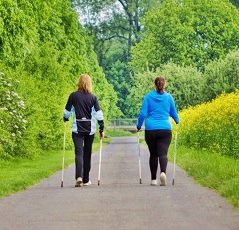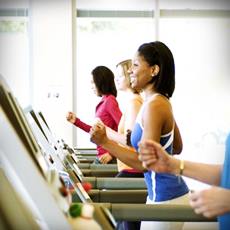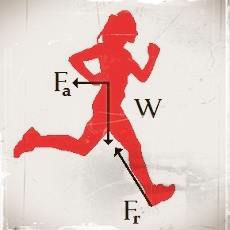Osteoarthritis
Osteoarthritis: symptoms, types, causes, treatment
Fact Checked
×All the content published in our website is fact checked to validate its accuracy.
Visit our guidelines web page to learn more about our strict processes regarding how we review our content's sources: reliable and reputable journals, media websites, universities, colleges, organizations, and professionals.
Our articles are based on scientific evidence, and the references are included in its footnotes, which are clickable links to sound scientific papers.
First published: 15.Sept.2023
Introduction: Osteoarthritis
Osteoarthritis (OA for short) is a condition that affects around 34 million Americans and is the most common type of arthritis.
It is a condition that affects the cartilage of the body's joints, wearing it down, damagin the joint lining, and the bones and connective tissue that form the joint.
Pain, inflammation, reduced mobility of the joints, stiffness are the consequence of this uncurable disease.
This article will explore the risk factors, causes, diagnosis, prevention measures and how to treat OA, from conventional medicine to complementary and alternative medicine options.
References and Further Reading
(1) Tian H, Huang L, Sun M, Xu G, He J, Zhou Z, Huang F, Liu Y, Liang F, (2022). Acupuncture for Knee Osteoarthritis: A Systematic Review of Randomized Clinical Trials with Meta-Analyses and Trial Sequential Analyses. Biomed Res Int. 2022 Apr 21;2022:6561633. doi: 10.1155/2022/6561633. PMID: 35496051
(2) Bender TSP, (2016). Balneotherapy:Efficacy and Safety in Osteoarthritis. Annals of the Rheumatic Diseases 2016;75:40
(3) Antonella Fioravanti, Mine Karagülle, Tamas Bender, Müfit Zeki Karagülle, (2017). Balneotherapy in osteoarthritis: Facts, fiction and gaps in knowledge. European Journal of Integrative Medicine, Vol 9, 2017, p 148-150, ISSN 1876-3820,https://doi.org/10.1016/j.eujim.2017.01.001
(4) Wang C, Schmid CH, Hibberd PL, Kalish R, Roubenoff R, Rones R, McAlindon T, (2009). Tai Chi is effective in treating knee osteoarthritis: a randomized controlled trial . Arthritis Rheum. 2009 Nov 15;61(11):1545-53. doi: 10.1002/art.24832. PMID: 19877092
(5) National Center for Complimentary and Alternative Medicine, (2008). The NIH Glucosamine/Chondroitin Arthritis Intervention Trial (GAIT). J Pain Palliat Care Pharmacother. 2008;22(1):39-43. PMID: 19062354
(6) Cordingley DM, Cornish SM, (2022). Omega-3 Fatty Acids for the Management of Osteoarthritis: A Narrative Review. Nutrients. 2022 Aug 16;14(16):3362. doi: 10.3390/nu14163362. PMID: 36014868
(7) Hewlings SJ, Kalman DS., (2017). Curcumin: A Review of Its' Effects on Human Health. Foods. 2017;6(10):92. Published 2017 Oct 22. doi:10.3390/foods6100092
(8) Gupta SC, Patchva S, Aggarwal BB., (2012). Therapeutic roles of curcumin: lessons learned from clinical trials. AAPS J. 2012;15(1):195-218
(9) Paultre K, Cade W, Hernandez D, Reynolds J, Greif D, Best TM, (2021). Therapeutic effects of turmeric or curcumin extract on pain and function for individuals with knee osteoarthritis: a systematic review. BMJ Open Sport Exerc Med. 2021 Jan 13;7(1):e000935. doi: 10.1136/bmjsem-2020-000935. PMID: 33500785
(10) Piscoya, J., Rodriguez, Z., Bustamante, S. et al., (2001). Efficacy and safety of freeze-dried cat's claw in osteoarthritis of the knee: mechanisms of action of the species Uncaria guianensis. Inflamm. res. 50, 442–448 (2001). https://doi.org/10.1007/PL00000268
(11) E.M. Bartels, V.N. Folmer, H. Bliddal, R.D. Altman, C. Juhl, S. Tarp, W. Zhang, R. Christensen, (2015). Efficacy and safety of ginger in osteoarthritis patients: a meta-analysis of randomized placebo-controlled trials. Osteoarthritis and Cartilage, Vol 23:1, p13-21, ISSN 1063-4584, https://doi.org/10.1016/j.joca.2014.09.024
(12) Oketch-Rabah HA, Marles RJ, Jordan SA, et al., (2019). United States Pharmacopeia Safety Review of Willow Bark. Planta Med 2019; 85(16): 1192–1202
(13) Persson MSM, Stocks J, Walsh DA, Doherty M, Zhang W, (2018). The relative efficacy of topical non-steroidal anti-inflammatory drugs and capsaicin in osteoarthritis: a network meta-analysis of randomised controlled trials. Osteoarthritis Cartilage. 2018 Dec;26(12):1575-1582. doi: 10.1016/j.joca.2018.08.008. Epub 2018 Aug 30. PMID: 30172837
(14) Park CY, (2019). Vitamin D in the Prevention and Treatment of Osteoarthritis: From Clinical Interventions to Cellular Evidence. Nutrients. 2019 Jan 22;11(2):243. doi: 10.3390/nu11020243. PMID: 30678273
(15) Brien S, Lewith G, Walker A, Hicks SM, Middleton D, (2004). Bromelain as a Treatment for Osteoarthritis: a Review of Clinical Studies. Evid Based Complement Alternat Med. 2004 Dec;1(3):251-257. doi: 10.1093/ecam/neh035. Epub 2004 Oct 6. PMID: 15841258
(16) García-Coronado JM, et al. (2019). Effect of collagen supplementation on osteoarthritis symptoms: a meta-analysis of randomized placebo-controlled trials. Int Orthop. 2019 Mar;43(3):531-538. doi: 10.1007/s00264-018-4211-5. Epub 2018 Oct 27. PMID: 30368550
National Health Service NHS UK. Osteoarthritis. Page last reviewed: 20 March 2023, accessed: 15 Sept. 2023
St. Lukes Hospital. Osteoarthritis. accessed: 15 Sept. 2023
About this Article
Osteoarthritis, A. Whittall
©2023 Fit-and-Well.com, 15 Sept. 2023. Update scheduled for 15 Sept. 2025. https://www.fit-and-well.com/health/osteoarthritis.html
Tags: arthritis, gout, osteoarthritis, collagen, rheumatoid arthritis, arthritis-osteo, degenerative joint disease, cartilage.






